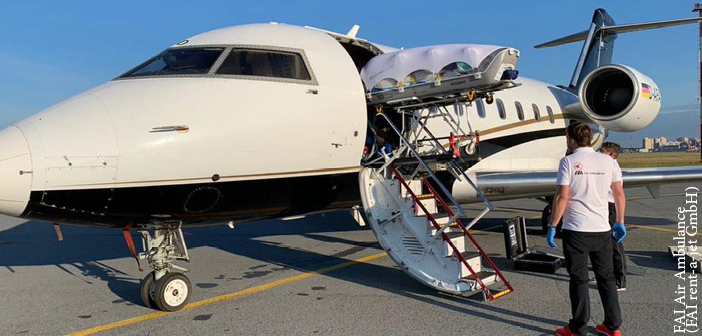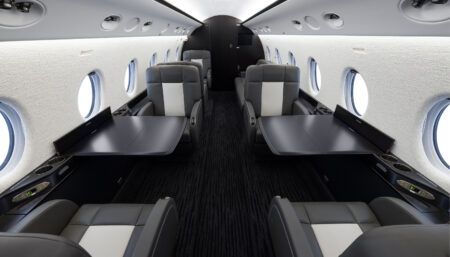After comprehensive tests for flammability, rapid decompression and patient evacuation, FAI was awarded an STC covering the installation of EpiGuard’s EpiShuttle isolation unit on CL-600 aircraft. EpiGuard noted the test was passed without complaints or remarks.
Since FAI has installed the EpiShuttle in the Bombardier Challenger 604 on a Spectrum Aeromed MedBase with a fixed adaption to a Spectrum Aeromed Cargo Stretcher, they no longer considered the EpiShuttle to be ‘loose equipment’. Due to this, FAI wanted to obtain an STC for the CL-600-2B16 aircraft that included the EpiShuttle.
“We are glad to see that FAI has obtained an STC for the CL-600-2B16 aircraft, an excellent aircraft for the transfer of infected patients with the EpiShuttle,” said Ellen Cathrine Andersen, CEO of EpiGuard. “We appreciate all time and resources the brilliant team at FAI Air Ambulance has put into the certification process. This shows that the EpiShuttle meets the requirements for an STC.”
FAI, in coordination with EASA and a development company, defined the requirements for the STC and the necessary test procedures were developed.
“The EpiShuttle went through comprehensive and challenging tests during the certification process,” said Nico Raab, medical operations manager at FAI Air Ambulance (FAI rent-a-jet). “All the test procedures were carried out without any complaint and the STC was issued and granted by the EASA.”
The EpiShuttle had to undergo three different tests during the process – for flammability, rapid decompression and patient evacuation.
The flammability test examined how easily the built-in material ignited, how quickly they burn and how they react when burned. EpiGuard noted that the tests showed there was neither combustion or smelting or drop formation in the test bodies.
Second, they tested the behaviour of the EpiShuttle in the event of a sudden drop in pressure – a rapid decompression test. It must be ensured that, in the event of a sudden drop in pressure in the aircraft, all components can withstand the forces, to avoid contamination of the environment. The behaviour of the EpiShuttle was tested and simulated in a pressure chamber at an approved test laboratory. The test showed no damage or functional restrictions on the components of the EpiShuttle nor the attachments, EpiGuard noted.
The last test concerned patient evacuation. According to specifications, it had to be possible to evacuate a patient within 90 seconds in an emergency. During the test the patient was evacuated by FAI employees within 56 seconds.
After the device had completed all the tests, EASA concluded that it met all the requirements. “The certification makes way for STCs on the CL-600 on other continents, as well it also shows that it is possible for other companies and aircraft to obtain an STC,” said Andersen.
FAI Air Ambulance invested a total of €57,000 in the individual test procedures.





